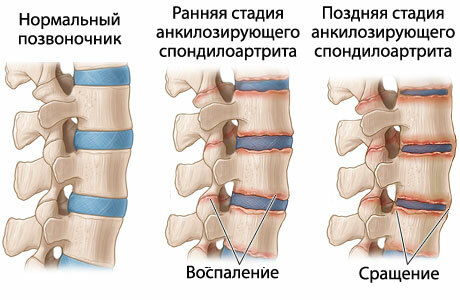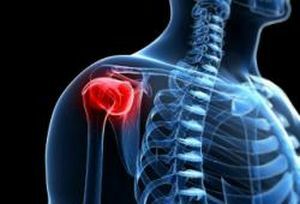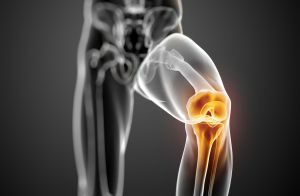 Juvenile arthritis very often provokes the development of complex disorders in the child's body and often leads to disability of children.
Juvenile arthritis very often provokes the development of complex disorders in the child's body and often leads to disability of children.
The most dangerous juvenile arthritis is rheumatoid - the disease is quite rare. However, it ranks first in the group of rheumatic childhood pathologies. Children can "outgrow" the disease, but can get a group of disabilities.
It all depends on the degree of development of the disease, its type and the age of the baby. At the first signs of juvenile arthritis in children, parents should always consult a doctor, do not delay with a trip to the hospital.
Contents of the article
- Content of the article
- This dangerous and unpredictable JURA
- Classification of the disorder in details
- System group
- Joint group
- Degrees of activity of inflammation
- Acute and subacute course of the disease
- Acute and very painful
- Subacute period
- Etiology of the disorder
- Symptoms of the disease
- Diagnostic methods
- Therapeutic approach
- Exercise and diet
- Prognosis and complications
- How to prevent the development of the disease?
This dangerous and unpredictable "JURA"
Juvenile rheumatoid arthritis is abbreviated as "JRA" - an autoimmune pathology accompanied by chronic inflammation of the joints. Not only connective tissues, cartilage and bones are affected, but also internal organs in individual cases. The disease is observed at the age of 16 years.
Rheumatoid arthritis is autoimmune in nature. What does it mean? The organism of the child, for reasons unknown to date, begins to perceive its own cells as foreign.
Immunity produces a complex of antibodies that actively fight the "enemy".That is, the body begins to slowly destroy itself.
Antibodies act on joints, provoking inflammation. In some cases, according to the same scheme, they disrupt the work of the internal organs - the heart, kidneys, liver. The course of the disease is accompanied by partial or complete loss of the functional abilities of the joints - the inability to bend fingers or legs depending on the localization of inflammation.
Juvenile rheumatoid arthritis is usually classified according to the type of lesion, the nature of the course of the pathology, the localization of inflammation and the type of development.
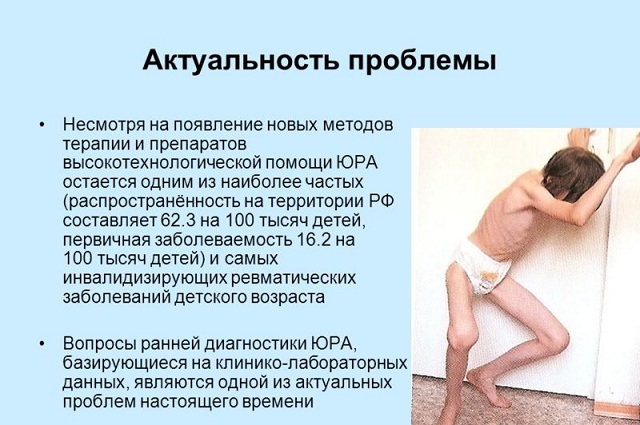
Classification of the disorder in details
Two groups of the disease are distinguished according to the type of lesion. It is systemic juvenile arthritis and articular. The latter has its own subgroups.
System group
Systemic juvenile arthritis in children is characterized by inflammatory processes not only in the joints, but also in the internal organs. This type of pathology is dangerous for the accumulation of serum, another name for which is serous, in the organs.
This, above all, affects the work of the heart and lungs. Lymph nodes are inflamed, sometimes they can be clearly observed under the skin - they protrude above the surface, painless on palpation.
Joint
The joint type of the disease is characterized by the defeat of only the joints. Depending on the number of affected areas, the joint type is divided into:
- Oligoarthritis means inflammation of not more than four joints. Moreover, inflamed areas are added with an interval of 6 months in the
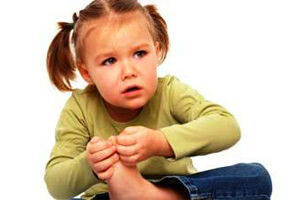 .The disease can affect children of any age - from the year of life. In oligoarthritis, both large and small, metatarsophalangeal and interphalangeal joints are affected. The ailment of this type is quite dangerous, as it can lead to a slowing of growth, limb deformities and a wheelchair. Also, for this type of impairment is characterized by a deterioration of vision - develops uveitis, and subsequently - cataract. As a rule, vision is restored at the first stages of treatment, but with a neglected state of the child the child can lose sight irrevocably.
.The disease can affect children of any age - from the year of life. In oligoarthritis, both large and small, metatarsophalangeal and interphalangeal joints are affected. The ailment of this type is quite dangerous, as it can lead to a slowing of growth, limb deformities and a wheelchair. Also, for this type of impairment is characterized by a deterioration of vision - develops uveitis, and subsequently - cataract. As a rule, vision is restored at the first stages of treatment, but with a neglected state of the child the child can lose sight irrevocably. - With polyarthritis , the upper and lower extremities are affected, the number of inflamed joints is more than 5. This disease is more common in girls. Not only the limbs, but also the neck and jaws can be affected. Pathology is characterized by long and complex treatment, often in a hospital setting.
Degree of activity of inflammation
The disease is divided into four groups according to the degree of activity of the inflammatory process. High, moderate, low group and remission are distinguished. With successful treatment and timely diagnosis of the disease, the ailment passes into the stage of remission.
It is also common to divide juvenile arthritis according to the immunological sign. Isolate seropositive type, in which the blood is detected rheumatoid factor. Seronegative type is characterized by the absence of a marker indicating a rheumatoid factor.
The first category usually passes more heavily than the latter - seronegative. The classification of the disease includes groups identified by the nature of the pathology.
Acute and subacute course of the disease
The disease can manifest itself in different ways.
Acute and very painful
Systemic juvenile arthritis usually has an acute onset. The articular appearance of the pathology can also have an aggressive course.
It is characterized by: 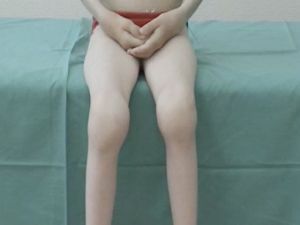
- by high body temperature;
- edema of affected areas;
- redness of the skin.
Not only large but also small groups of joints become inflamed. There is pain in movement and rest. Often there is an allergic rash. Acute disease is rare.
Subacute period
Subacute onset is characterized by less pronounced signs. The temperature of the body is not observed. More often one large joint is affected, more rarely two or three.
Affected area increases in size, swells, but no painful manifestations. Children under two years are very poorly moving or stop walking at all. A bright manifestation of rheumatoid arthritis subacute beginning is the morning stiffness of the child. After sleep, the baby is difficult to move, the condition lasts about an hour or more.
Another characteristic feature of the subacute course of the disease is uveitis - the defeat of the choroid of the eye. Deterioration of vision develops gradually and can take six months to establish an accurate diagnosis.
This feature of the disease is often characteristic of girls under 10 years old. The onset of a disease of this nature is often accompanied by oligoarthritis - a subtype of the JRA.
At the first manifestations of this or that disease course, you should contact the hospital and begin the examination.
Etiology of violation of
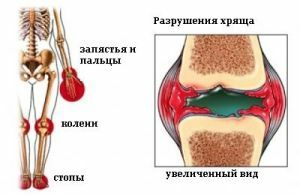 The cause of juvenile rheumatoid arthritis is considered to be a genetic predisposition and a viral, bacterial infection. However, these are only assumptions, and not exactly the established etiology of the disease.
The cause of juvenile rheumatoid arthritis is considered to be a genetic predisposition and a viral, bacterial infection. However, these are only assumptions, and not exactly the established etiology of the disease.
For many decades, scientists have been trying to understand the nature of the ailment, but in vain. It is known that more than half of the patients have rheumatic pathologies in the genus. This gave grounds for establishing as a cause a genetic predisposition.
It was also found that many patients suffered viral and bacterial infections, against which the joints began to be affected. However, it was not possible to prove these factors.
However, the etiology of the disease was considered to be hypersensitivity to external factors.
Symptoms of the disease
Depending on the type of pathology, different groups of symptoms are distinguished. So the joint appearance of the JRA will differ in symptomatology from the systemic one.
The manifestations of articular juvenile arthritis include:
- affection of all joint groups - swelling and swelling are observed;
- "warmth" of the joint - increased temperature of the affected area;
- tenderness in movement and rest;
- morning stiffness - should last at least half an hour, otherwise the symptom is not included in the clinical picture;
- limbs do not bend, subluxations are observed;
- loss of joint function in the late stages of the disease.
The system type of JRA and its symptoms are more aggressive. The disease has pronounced symptoms. Among them are:
- high body temperature - up to 40 ° C;
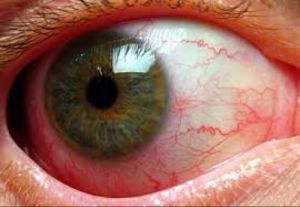
- inflammation of all joint groups - one or more may be affected;
- appear characteristic brown spots near the nails;
- disorders in the work of the heart - shortness of breath, pain, arrhythmia, tachycardia or bradycardia;
- enlarged lymph nodes;
- uveitis;
- enlargement of the liver, spleen.
Along with the common symptoms of systemic JRA, there are two syndromes - Still and Wisler-Fanconi. The first is characterized by the appearance of an allergic rash, an inflammation of the serous membranes. The second has such signs as spots on the skin, inflammation of the tissues in the heart and lung fibrosis. Both syndromes are accompanied by symptoms characteristic of the systemic type of the disease.
A common indication for concern is swelling of the joints, their swelling. That is, initially there is juvenile chronic arthritis, later diagnosed with rheumatoid arthritis.
Diagnostic methods
To diagnose the disease resort to laboratory blood tests for the identification of indicators of SEA, rheumatoid factor, ACPC - marker of the disease.
Also send the patient to the ECG, X-ray and ultrasound. In addition to the standard examination, the doctor collects an anamnesis of the medical history of the child, parents and other close relatives for the identification of rheumatic pathologies in the genus. An ophthalmologist and rheumatologist may need to be examined.
Only on the basis of the collected results of analyzes, pictures and conclusions of other doctors, you can put an accurate diagnosis and identify the type of JRA.
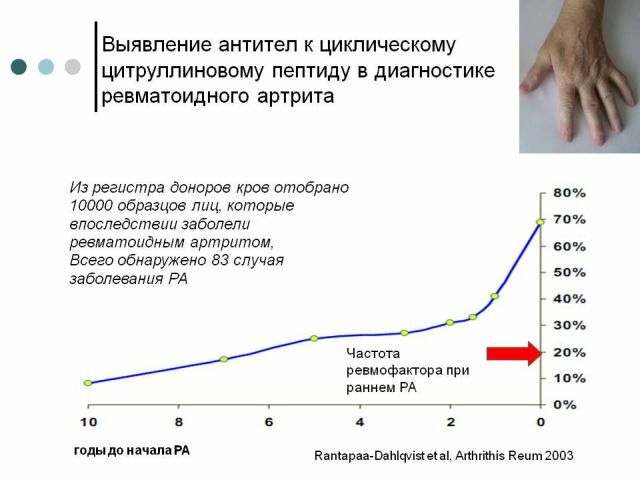
Therapeutic approach
Drug treatment of juvenile arthritis in children includes the use of non-steroidal anti-inflammatory drugs. They quickly and effectively reduce pain, reduce swelling of joints and increase their functionality.
These include:
- Piroxicam;
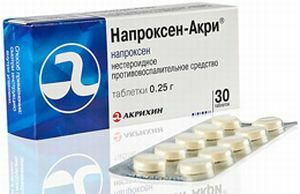
- Diclofenac;
- Indomethacin;
- Ibuprofen;
- Naproxen, etc.
Drugs are taken orally after a meal in case of prolonged therapy. For fast, necessary analgesic effect, the doctor prescribes taking the medicine 30 minutes before meals.
Medications of this group do not block the process of joint destruction. The same actions include preparations of the glucocorticoid group. These include:
- Prednisolone;
- Methylprednisolone;
- Betamethasone;
- Triamcinolone.
 The glucocorticoid group of drugs is used to achieve rapid suppression of the inflammatory process. With their help, painful symptoms stop. The medication is quickly excreted from the body.
The glucocorticoid group of drugs is used to achieve rapid suppression of the inflammatory process. With their help, painful symptoms stop. The medication is quickly excreted from the body.
However, there are a number of contraindications in which intraarticular injections can not be performed. Drugs do not apply for a long time - there can be complications, side effects.
Immunosuppressive therapy is aimed at the very process of joint destruction. This group of medicines is designed for long reception without interruption. The medication is prescribed from one to three times a week, depending on the tolerance of the body.
The following drugs are allocated:
- Methotrexate;
- Cyclosporin;
- Leflunomide.
Each is prescribed with caution and taking into account the characteristics of the body, the type of disease and the tolerability of the components of the medication.
Exercise and diet
In addition to medical treatment, it is necessary to monitor the mobility of the child. You can not immobilize the body. Showing walks, swimming, cycling and other physical activities that do not involve sudden movements.
Depending on the degree of joint damage, orthopedic correction is applied - wearing special apparatuses, corsets, tires, 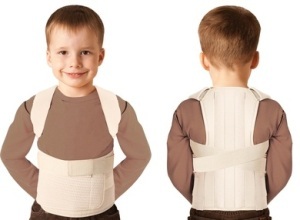 langettes.
langettes.
Because the disease can affect the child both by weight loss and by typing, a diet is prescribed. The doctor determines its list, depending on the individual characteristics of the organism.
Food intake with calcium, vitamin D and protein is often prescribed. The diet is prescribed and as prevention of osteoporosis - the consequences of a systemic JRA.
A comprehensive approach to treatment will save the child from disability and other serious complications.
Prognosis and complications
Juvenile rheumatoid arthritis, as a rule, is cured and leaves no consequences for the musculoskeletal system. Often children "outgrow" the ailment.
However, advanced stages of the disease, which have a systemic nature, do not pass without a trace. Not only joints, but also other organs are affected. Rarely, but if the disease is ignored, a fatal outcome may occur.
Complications include loss of vision, kidney failure, osteoporosis, immobilization of joints. Owing to osteoporosis, frequent fractures occur. Unfortunately, the systemic form of the disease rarely passes without a trace.
How to prevent the development of the disease?
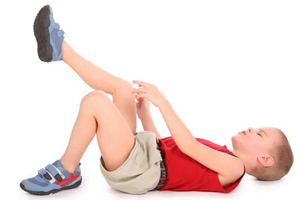 To prevent the disease can be attributed only to close monitoring of the child. This is especially true for families where rheumatic pathologies are not uncommon.
To prevent the disease can be attributed only to close monitoring of the child. This is especially true for families where rheumatic pathologies are not uncommon.
It is not possible to prevent an ailment, since the cause of its occurrence is unknown. However, timely detection of the first signs of arthritis will already have the nature of secondary prevention.
Do not delay the trip to the doctor and do self-medication. This can lead to complications and serious consequences.

